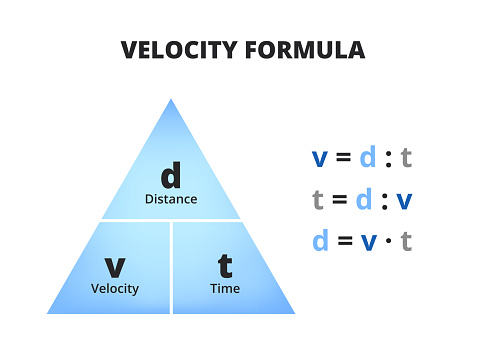9M1 Science
Section outline
-
Kia Ora ākonga!
Welcome to your Pūtaiao (science) course page for 2022. My name is Ms. Katafono and I will be your Science teacher this year. This page is where you will find all the information you will require for your Science course. All tasks and assessments will be placed here as well as additional lesson notes and resources. Please make it a habit to check this page at the start of each week to ensure you are up to date.
This term we will be focusing on the context: Volcanic Volumes . We will be following this context through volcanoes and other natural disasters/ risks and hazards. We will be collaborating with Ms. Martin for Global Studies :)
Your kaiako here in the Maunga (Mountains) whānau hope that your year at MHJC will be full of fun and challenging activities that will see you grow as a learner. Enjoy this year and if there are any queries do come see me or feel free to email me - mkatafono@mhjc.school.nz -
Kia Ora ākonga,
This week we are going to get into our learning and I will introduce you to our context: "Volcanic Volumes". Please note: I am aiming to have minimum device use in class, so we will be doing as many hands-on experiments and activities as possible.
- Most of your work in class will be in your books so make sure to bring your science book to class.
- Homework will be assigned each week , either through brainpop or education perfect. This will help complement and reinforce the learning we do in class. Please make sure that this is done by the due dates provided.
Week 2 outline is as follows:
Session 1: We will go through classroom rules and expectations in class as well as establish how you best learn and what your learning preferences are. Watch the video below to see what learning preferences are.
I will also go through assessment guidelines and how these will be graded.
Session 2: What is a puia (volcano) and where in NZ do we find them? We will be looking at how much you know about volcanoes and briefly look at the recent eruption and tsunami on Hunga-Tonga Hunga Ha'apai.
Session 3: Volcano activity ( Lab schedule will be split into 2. Half of you will be doing it on a Wednesday and the other on the Thursday )
EXPLORE / TŪHURA learning intentions:
- We are EXPLORING the context of Volcanic Volumes by discovering what different type of volcanoes look like.
- We are EXPLORING of Volcanic Volumes by connecting that volcanoes have been built up by eruptions.
Success Criteria: I can/have...
- Identify, label and locate some active puia (volcanoes) in Aotearoa.
- Show my understanding of how volcanoes are created and destroyed over time.
Activities:
- Create poster in groups and complete Volcano worksheet
- Volcano experiment
Homework:
Assigned on google classroom please check for due date and ensure this is completed by then. -

Kia Ora Yr 9,
This week we will be looking at lab safety rules and expectations before we dive into an experiment.
Could you please make sure you have completed last week's work including the science intro activity on Flipgrid and the rangahau group activity where you were to look at 1 of NZ's volcanoes and create a slide for this on G-slide.
The structure for this week is as follows:
Session 1: Complete last week's work ( Mr Hishey will be checking so make sure to complete this ), if you are done - go through the lab safety and expectations slides. I have added a scavenger hunt where you are to find safety equipment within the lab that we would use to ensure the safety of our karaehe ( class) and school mates.
Session 2: Earth structure whakamātau (experiment ) ( worksheet will be given out, you will need to take a picture of this to attach to your work once done in your groups )
Session 3: Documentary and worksheet
EXPLORE / TŪHURA learning intentions:
- We are EXPLORING the context of Volcanic Volumes by familiarising ourselves with the lab safety procedures and locating and recognising safety equipment within our lab.
- We are EXPLORING the context of Volcanic Volumes by interpreting the various signs and symbols in the lab and understanding what these mean.
- We are EXPLORING the context of Volcanic Volumes by conducting an egg dissection experiment and connecting the layers of this to the Earth's structure.
Success Criteria: I can/have...
- Identify and locate where our safety equipment are within the lab
- Understand when and how to use the safety equipment within the lab
- conduct an experiment safely and work within my group to distribute the various roles of cleaning, note-taking and gathering equipment.
- Label a diagram of the Earth's structure and compare this to a dissection of a boiled egg
Activities:
- Brainpop lab safety activity assigned
- Egg dissection experiment
- Flip grid activity
- Group activity ( volcano rangahau from last week )
Homework:
Finish all tasks from Week 2 -

Kia Ora ākonga,
This week we will be moving into tectonic plates, continental drift and the different boundaries. Plan for the week is as follows:
Monday: Tectonic plates, our super continent (Pangea) and the continental drift
Wednesday: Bunsen burner safety experiment. We will be going through this before next week's experiments as these will involve using the bunsen burner.
**There are no classes on Thursday, and you will be finishing at 12pm on Friday. Therefore, an education perfect activity will be assigned to wrap up and review the week's learning and keywords.
EXPLORE / TŪHURA learning intentions:
- We are EXPLORING the context of Volcanic Volumes by investigating the process of tectonic plates and connecting this to our understanding of how the continents are they way they are today
- We are EXPLORING the context of Volcanic Volumes by recognising and organising the continents of the supercontinent Pangea.
- We are EXPLORING the context of Volcanic Volumes by observing the significance of convection currents and plate tectonics
Success Criteria: I can/have...
- define the following keywords:
Tectonic plates, supercontinent, Pangea, convection currents, Divergent boundaries, Convergent boundaries, Transform boundaries
Explain the process of the motion of the tectonic plates.
2. Recognize and assemble the continents of the supercontinent, Pangea.
3. Understand the importance of convection currents.
4. Explain the significance of convection currents and plate tectonics.
Activities:
- Bunsen burner safety experiment
- Boundaries activity
Homework:
Education perfect task -
Kia Ora akongā,
This week we will be looking at the different types of convergent boundaries, looking at how volcanoes form and start focusing on the volcanoes of Aotearoa.
This week's lessons are as follows:
Monday: Different types of convergent boundaries- with a play-do activity to demonstrate these.

Wednesday: Earthquakes and volcanoes in NZ. We will be looking at the formation of volcanoes and why the are different shapes and start focusing on the volcanoes in NZ
Thursday/Friday: You will be creating a storyboard comic on CANVA or on an A3 paper ( your choice) to show how volcanoes are formed

FOCUS / ARONGA learning intentions:
- We are FOCUSING on defining the different types of volcanoes here in Aotearoa and describing how these are formed
- We are FOCUSING on developing a storyboard to demonstrate our understanding of how volcanoes are formed and explaining the process of these in Aotearoa
- We are FOCUSING on comparing the different shapes of volcanoes and discussing the different types of volcanoes we have here in Aotearoa
Success Criteria: I can/have...
- Describe the different types of convergent boundaries
- Understand how these create mountains and volcanoes
- Explain why some places are more likely to have earthquakes and volcanoes
- Explain the volcanic processes within Aotearoa
Activities:
- Play-do convergent boundaries
- Using a volcano model to explain volcanic eruptions (experiment)
- Creating a storyboard to explain how volcanoes are formed
Homework:
Storyboard activity (if not finished by Focused Friday) -
- We are FOCUSING on developing an understanding of how volcanoes erupt by explaining volcanoes viscosity and silica content
Kia ora Yr 9,
This week we will continuing with how volcanoes are formed - specifically, why we see different shapes and types of volcanoes. We will then observe what volcanoes produce and compare the different volcanoes we have in Aotearoa.
Plan for the week is as follows:
Monday: Viscosity experiment to understand different volcanic flows and shapes.
Wednesday: Rock cycle intro
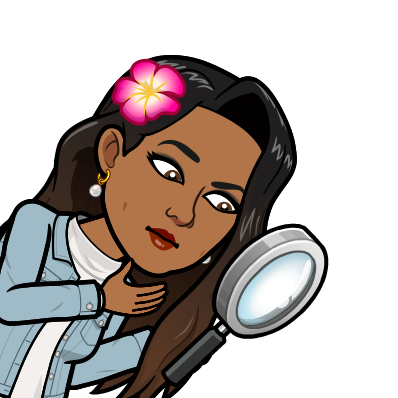

Thursday/Friday: Types of volcanoes in NZ



FOCUS / ARONGA learning intentions:
- We are FOCUSING on defining the different types of volcanoes here in Aotearoa and describing how these are formed
- We are FOCUSING on developing an understanding of how volcanoes erupt by explaining volcanoes viscosity and silica content
- We are FOCUSING on comparing the different shapes of volcanoes and discussing the different types of volcanoes we have here in Aotearoa
Success Criteria: I can/have..
- Define what magma is
Describe the properties of magma, using appropriate words such as viscosity and pressure, and concepts such as the expansion of gases.
Understand and explain why volcanoes erupt differently and how these contribute to the different shapes
Compare the different volcanoes within Aotearoa and explain why they are different shapes
Activities:
- Magma (viscosity ) activity
- Make hokey pokey and toffee (simulate lava)
- Sorting card activity for volcanic process ( review )
Homework:
EP assigned -
This week you will be doing your global and science assessment. The PDF and rubric should be available to you at the top of the page.
I have also put this herePLAN & DO / WHAKAMAHI learning intentions:
- We are PLANNING to demonstrate our understanding of the learning by creating a natural hazard evacuation plan for our assessment.
- We are PLANNING to produce an evacuation plan by applying our knowledge of the internal processes of a volcano through a collaborative assessment with Global Studies
-

Kia Ora ākonga,
You should have all submitted your assessments which were due on the 28th March. We will continue with our topic and focus on the rock cycle which will lead into weathering and erosion.
Plan for the week is as follows:
Wednesday: Rock Cycle Star burst activity
Thursday/Friday: Interactive Rock cycle activity

PLAN & DO / WHAKAMAHI learning intentions:
- We are PLANNING to create a starburst rock cycle so that we can apply our understanding of the rock cycle and the processes within it.
- We are PLANNING to consult our learning of the rock cycle by demonstrating the role that the rock cycle plays in the formation of volcanoes
Success Criteria: I can/have...
- Identify the 3 types of rocks ( sedimentary, igneous, metamorphic)
- Explain how rocks change through the rock cycle
Activities:
- Starburst rock cycle activity
- Interactive rock cycle activity online.
Homework:
Scientific literacy reading assigned on readworks ( 'Can do for FFR, otherwise as homework ) -

Kia Ora ākonga, this week we will finish off with our rock cycle and move into weathering and erosion.
Plan for the week is as follows:
Monday: Rock cycle simulation activity and worksheet
Wednesday: Weathering and Erosion - Experiment
Thursday: Trip to Mangere Mountain
Friday: FFR activities, complete comic strip, and erosion/rockcycle worksheet
FOCUS / ARONGA learning intentions:
- We are FOCUSING on rock cycles and describing how their are different types of rocks and the processes they undergo
- We are FOCUSING on explaining the type of rock that is seen in volcanoes and created from magma
- We are FOCUSING on enhancing our learning by going on a trip to Māngere mountain and comparing our scientific understanding to matauranga Māori
Success Criteria: I can/have...
1.define terms related to the rock cycle
2.explain the characteristic of and categorize three main types of rock
3.discuss how rock cycles through the earth
4. Recognize that weathering breaks down minerals and rocks and occurs as a result of both mechanical and chemical processes.
Activities:
- Rock cycle online simulation activity lab
- Erosion experiment lab
- Mangere mountain trip on Thursday
-

Kia Ora ākonga,
This week we will be reflecting on our assessment and Māngere Mountain trip and how Māori used volcanoes to their advantage.
Plan for the week is as follows:
Monday: Complete all google classroom tasks inc. 'A big bang' article. Reflect on how Māori used volcanoes ( using our experience from Mangere mountain to reflect on this )
Wednesday: Blooket science review, finish of posters
Thursday: Finish off posters, watch movie of choice.
REFLECT / WHAIWHAKAARO learning intentions:
- We are REFLECTING on our trip to Mangere mountain and how Māori used volcanoes to their advantage.
- We are REFLECTING on our assessment and reviewing the purpose of this in collaboration with Global studies and identifying the purpose of this.
-
Welcome back ākonga!! This term our context will be Kaitiakitanga: Guardians of our natural world
We will be collaborating with Maths to get a deeper understanding of the different aspects of Matariki and the true meaning of the celebration that will be having its first public holiday this year on the 24th of June.
2 of the stars within the Matariki cluster are linked to kaitiakitanga ( Guardianship, stewardship, protection, preservation of taonga) and we will be having a look at these.
In pūtaiao ( science) we will be focusing on different aspects of kaitiakitanga and this will be around Maramataka ( following the lunar calendar for harvesting ) seasons/day/night, plant classification ( how and when to plant ) and Rongoā medicine.
There will also be an extension opportunity for some to help create a hangi pit for our school and in time for Matariki celebrations on the 23rd of June. More details of this will be shared during class.
Plan for the week is as follows:
Monday: Title page 'Tātai Arorangi', KWL chart on google classroom and research into Matariki
Wednesday: Experiment/Activity on Matariki
Thursday/Friday: Complete research on Matariki and submit this.
-
EXPLORE / TŪHURA learning intentions:
- We are EXPLORING our concept of Kaitiakitanga by rangahau of Matariki and its significance to Māori people
- We are EXPLORING our concept of Kaitiakitanga by connecting the location of stars, moon phases to when activities such as planting and harvesting are done
- We are EXPLORING our concept of Kaitiakitanga by connecting our understanding of moon phases, day time and night time to how seasons are observed

Kia Ora ākonga,
For the next 2 weeks we will be looking at moon phases, and linking this to maramataka ( the Māori lunar calendar) This will help us understand how Māori used the moon to determine when to plant, harvest etc.
The plan for the next 2 weeks is as follows:
Week 2:
Monday: Matariki research and workbook. You will be working through research on Matariki and its significance. This will also help build your skills in literacy by helping you structure your writing and comprehension of questions in science.
Wednesday- Friday : Complete Matariki research and workbook , linking to maramataka
Week 3:
Monday: Observing moon phases
Wednesday: Modelling the different moon phases - moon phase activity
Thursday/Friday: Moon's influence on Earth and tides
Success Criteria: I can/have...
Explain the Moon’s influence on Earth.
Describe the cause of nighttime and daytime.
Define the term year
Explain why we have seasons on Earth.
Define the term month
Activities:
- Matariki workbook
- Moon phases activity
- Education perfect moon phase, tides, seasons task
Homework:
Moon phases diary -
EXPLORE / TŪHURA learning intentions:
- We are EXPLORING our concept of Kaitiakitanga by investigating how night and day occur
- We are EXPLORING our concept of Kaitiakitanga by questioning how Māori used maramataka to guide their lives
- We are EXPLORING our concept of Kaitiakitanga by discovering how seasons occur and connecting our understanding of this and moon phases to maramataka

Kia Ora ākonga,
This week we will be looking at seasons, linking to maramataka and heading into plant classification and rongoā.
Plan for the week is as follows:
Monday: Earth's orbit and rotation , Orrery experiment
Wednesday: Education Perfect ( relief as I will be on a trip )
Thursday/Friday: Seasons and maramataka ( Māori lunar calendar )
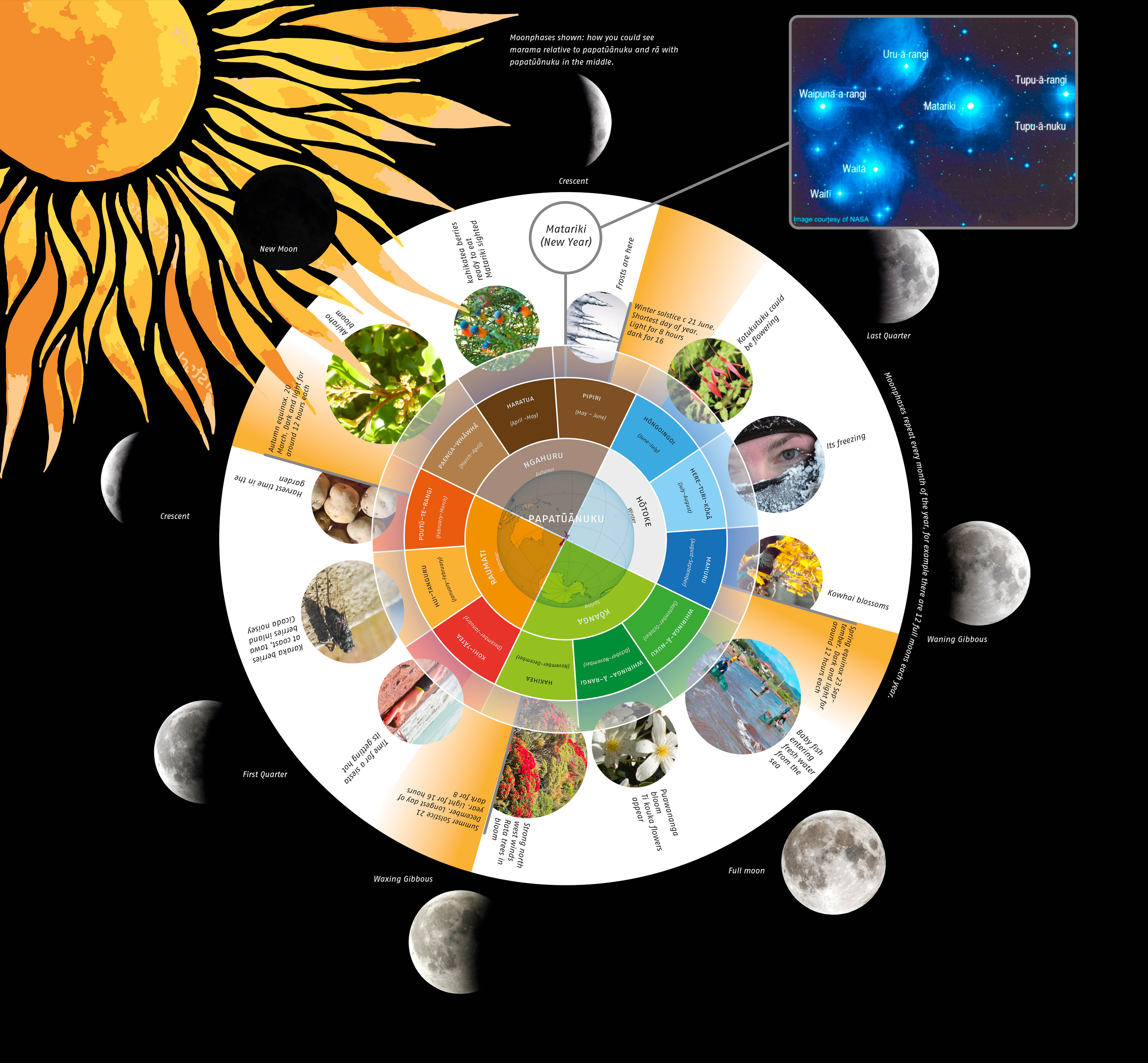
Success Criteria: I can/have...
Explain why we have seasons on Earth.
Familiarise with the lunar months and activities on Maramataka
Begin to recognise different plants and their classification
Activities:
- DIY orrery experiment
- Maramataka lunar worksheet and maramataka dial activity
Homework:
Education perfect assigned tasks -
FOCUS / ARONGA learning intentions:
- We are FOCUSING on comparing plant cells and animal cells to see how and why they differ in their functions
- We are FOCUSING on explaining the properties of our rongoā by identifying the different parts of a plant and their functions.
- We are FOCUSING on enhancing our understanding of plants by using a microscope to identify and define features of a plant.
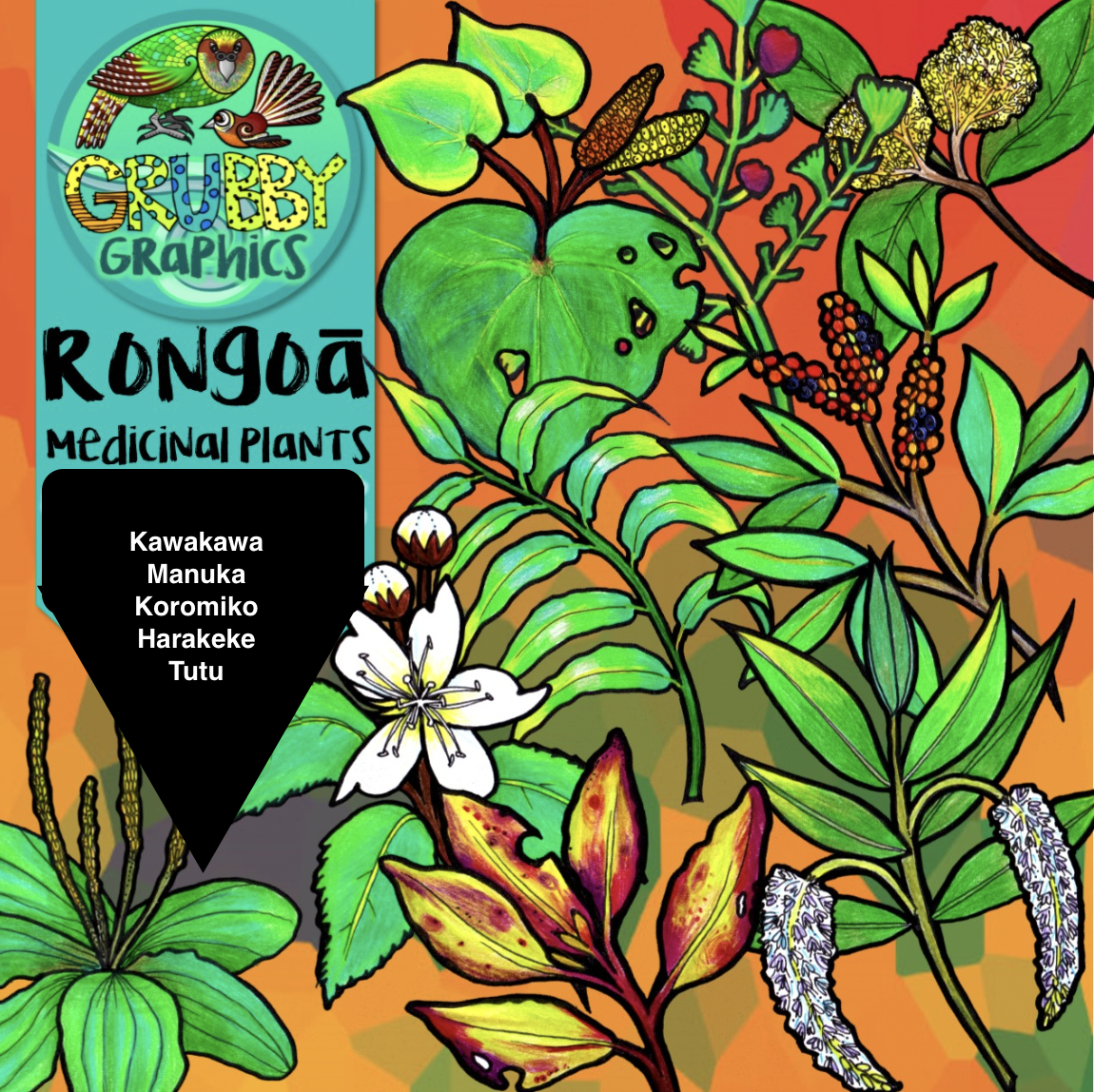
Kia Ora ākonga,
We will be moving into Rongoā ( traditional medicinal Māori plants) and how these were used.
These will be covered over the next few weeks and we will start with plant classification and parts of plants before moving into this.
Plan for this week is as follows:
Monday: Tāne forest scavenger hunt (We will be looking at native plants and medicinal plants)
Wednesday: Learning from home. This will be on googleclassroom. (You MUST complete this in order to do experiments when you come back)
Thursday: Relief: Education perfect ( Plant classification )
Friday: Catch-up on the week's work/Brain pop
Plan next week is as follows ( Week 7 )
Monday: Visit and outline/measure rongoā garden to use for Maths/ Microscope correct use
Wednesday: Onion cell microscope experiment
Thursday/Friday: parts of a plant and function/ photosynthesis and transpiration experiment if time allows
Success Criteria: I can..
- Outline the similarities an differences between plant and animal cells
- Use a microscope, and describe its basic features and functions.
- Name the major parts of plants and describe their function
- State the purpose and features of the process of photosynthesis.
- Explain how plants move water from their roots to their leaves
- Students will understand the cultural, historical and social significance of Rongoā Maori.
Activities:
- DIY plant cell tshirt/ 3D model
- Learning how to use a microscope
- Observing plant cells under a microscope
- Tāne forest scavenger hunt
- Visiting our rongoā garden to take measurements and plan outline for Maths.
- Transpiration in plants ( if time allows)
- Labelling plant parts
Homework:
Brainpop activityEP activity
-
EXPLORE / TŪHURA learning intentions:
- We are EXPLORING the context of Fast and Furious by experimenting and observing the different concepts of physics involved in cars.
- We are EXPLORING the context of Fast and Furious by classifying the different types of forces there are and connecting some of these to cars

Kia Ora ākonga,
Welcome back to school. This term, our context is Fast and Furious. We will be collaborating with Maths to get a deeper understanding of how cars ( and all things cars related) work.
In pūtaiao (science) we will be focusing on the strand of physics- specifically looking at Forces and Motion.
Achievement Objectives for this Term:
L5: Identify and describe the patterns associated with physical phenomena found in simple everyday situations involving movement, forces, For example,the effect of contact and non-contact on the motion of objects.
Plan for the week is as follows:
Monday: Introduction to context, title page.
Wednesday: Tennis ball bounce experiment and worksheet on Google classroom
Thursday/Friday: Forces ( contact vs non-contact) notes
A rough outline of our context and brainstorm from all your discussions and input:

Keywords: friction, forces, motion, acceleration, mechanics, contact forces, non-contact forces, resistance, Newton's Laws, Weight, mass, velocity, Hooke's Law.
-
PLAN & DO / WHAKAMAHI learning intentions:
- We are PLANNING to do Physics through the context of Fast and Furious by applying our knowledge of Newton's 1st in our experiment so we justify what forces are acting on objects and how to calculate forces.
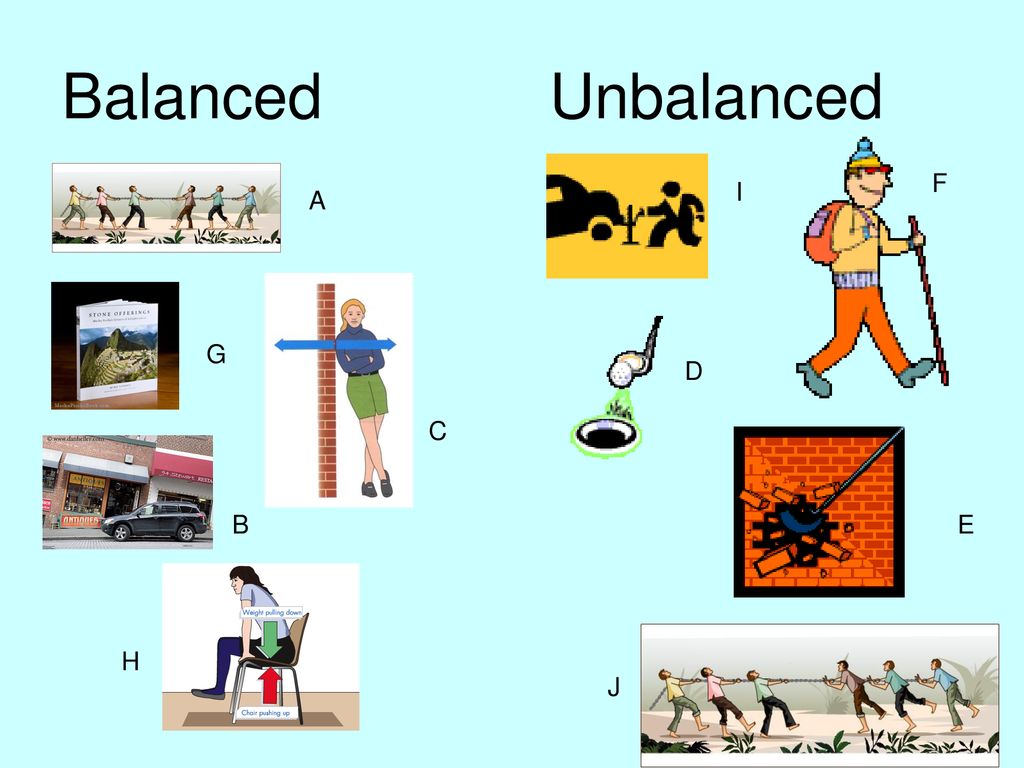
Kia Orana ākonga,
This week we will be looking at the different types of forces but more in-depth. We will begin with balanced and unbalanced forces, how to do force diagrams and calculated forces and net forces acting on objects. I will also be introducing you to Newton's 1st law of intertia alongside this.
Plan for the week is as follows:
Monday: Balanced/Unbalanced forces, net forces and drawing force diagrams. On Googleclassroom I have attached a worksheet for you to practice calculating forces. I will also show you the Newton/force meters and if we have time you will measure the forces on your bag and other objects in the lab.
Wednesday: Motion, Calculating speed using the formula and Experiment
Thursday/Friday: Drawing graphs for your experiment from Wednesday
Homework: EP ( Forces, graphs)
Success Criteria: I can/have...
To identify forces.
To use force arrows in diagrams.
To compare balanced and unbalanced forces and observe these in race cars.
To link these to Newton’s 1st law of intertia
Activities:
- Creating force diagrams
- Measuring speed through our experiment and creating graphs for this
Homework:
EP - Forces, NOS skills -
PLAN & DO / WHAKAMAHI learning intentions:
- We are PLANNING to do Physics through the context of Fast and Furious by experimenting and demonstrating how distance, speed and time are related.
- We are PLANNING to do Physics through the context of Fast and furious by applying our learning of friction and gravity in our experiments and hypothesising how friction would affect race car drivers.

Kia Ora ākonga,
This week we will be looking at gravity and friction. We will be relating this to the context by looking at when friction benefits race car drivers and the effects of this.
Plan for the week is as follows:
Monday: Distance-Time graphs and practice worksheets. You will look at how to do graphs correctly.
Wednesday: Marvelous Marbles - To move or not to move ( Gravity and Friction experiment )
Thursday/Friday: Experiment and write-up revision
Success Criteria: I can/have...
- create and interpret distance-time graphs.
- use the formula D=VT to calculate distance, speed and time.
- identify the relationship between weight and mass (units)
- understand the relationship between balanced and unbalanced forces
- use the formula (F = ma) to calculate force
- understand how forces affect motion and the effect of friction as an opposing force
Activities:
- Marbles experiment
- EP - forces,
-

Kia Ora ākonga,
This week we will continue with our learning and move into the last 2 laws of Newton. Plan for the week is as follows:
Monday: Force = Mass x acceleration equation,
Wednesday: whakamātau ( Experiment )
Thursday/Friday: Scientific literacy reading on lab safety and signs meaning -
PLAN & DO / WHAKAMAHI learning intentions:
- We are PLANNING to do Physics through the context of Fast and Furious by designing and constructing our toy cars within our groupbs
- We are PLANNING to do Physics through the context of Fast and furious by applying our learning of forces and motion in our experiments and collaborating with our groups to hypothesise how these will affect our design and toy car.
- We are PLANNING to do Physics through the context of Fast and Furious by performing a few test runs with our prototype and using the design process to see how we need to improvise and solve any problems with our toy car design.
- We are PLANNING to do Physics through the context of Fast and Furious by producing a final product of our toy car and seeing how this will perform.

Kia Ora ākonga,
For the next 4 weeks you will be creating/designing your own race in groups of 3-4. I will be trialling a self-directed, learning resource that you can use- working through the lessons at your own pace. This will complement your car design making and help you understand the science of cars better. The intention of this is to provide a similar learning structure to that of Ormiston Senior College so that you can familiarise yourself and the transition to senior college is seamless for you. There will also be extension work on the document for those of you who move through the content quicker.
Plan for the next 4 weeks is as follows:
Week 7:
Week/Date
Learning Intentions
Tasks for the week
Key Words
Links for Independent Learning
Term 3 Week 7
1.Familiarising with laboratory ( safety in lab, what different equipment are, how to use and how to read scales )
2. Reflection on assessment, looking at different aspects of your scientific report, taking teacher feedback and seeing where you could have improved.
EP: Lab safety and skills
Reading scales
review slides on this doc and take notes in your books. ( Draw the lab signs)
Scipad lab safety pages 8-11
Wednesday Experiment ( familiarising with equipment )
( In your books - draw the setup for each station)
Signs in labs and what they mean,
Names of lab equipment and how to use these .
Hazard, symbol, equipment,
Lab safety:
Equipment:
Extension:
Scipad Pages 8-11, Pages 17-19 ( in your books.
Scientific literacy article here ( write a summary about what the article is about
Look through the scientific report structure/writing slides. Write key notes in your books.
Scientific report structure/writing
Week 8:
Term 3 Week 8
Car journal - design your own cars ( released on GC 12/09)
Explain that seatbelts exert a force, preventing the wearer from moving forward.
Demonstrate how crumple zones absorb energy
Make connections between car crashes, forces and Newton’s laws.
-Research on different parts of the car ( 5 slide presentation)
Understanding the speedometer
Impacts of speeding and how to keep your car safe
What are the key parts of a car
-Wednesday: In library
Thursday/Friday experiment:
Investigating car safety features
( will be on google classroom)
Label parts of the car and their functions.
chassis frame, engine, transmission, brakes, ignition, suspension & steering, exhaust, fuel tank, battery, radiator, lights.
https://www.engineeringchoice.com/car-parts/
Video:
Extension:
Read the article on this link here and explain what crumple zone is and how it absorbs energy. What is the benefit of this?
Week 9:
Term 3 Week 9
1.Be able to define the key types of energies
4.Make connections between car crashes and kinetic energy transformation.
5.Demonstrate how kinetic energy is reliant on the mass of an object and the velocity at which it moves.
1.Access the google slides here and take notes on what Potential and Kinetic is. Are there specific types of each?
2.Bill NYE video and worksheet on google classroom ( released on 16th September - if you get to this stage earlier let me know)
3. Readworks article assigned ‘Everyday energy’
Use flipgrid and explain what different types of energies there are, and which ones are relevant in cars - link to flipgrid here
9M1 class code: 9e641c16
9M2 class code: 5959788c
kinetic energy, potential energy, gravitational, elastic and chemical potential energy, sound, thermal, mechanical , , light energy
Types of energy:
Energy in race cars
Extension:
Scientific literacy: Read the article here and provide a summary ( 250) words on what this is about
.
Week 10:
Term 3 Week 10
1.Test your car design prototype, revise and look at where you need to improve
2.Test final product - we will be racing our cars on the driveway behind kapua.
3. Reflect: What could you have done better? Put this in your car journal document.
Complete your car journal
What were some limitations?
How did you overcome this?
-
EXPLORE / TŪHURA learning intentions:
- We are EXPLORING the topic of Chemistry through the context of Halloween by observing the differences between solids, liquids and gases and connecting our observations through experiments to the different properties of each.
- We are EXPLORING the topic of Chemistry through the context of Halloween by organising the types of matter into compounds, mixtures and elements and investigating the differences between these
- We are EXPLORING the periodic table and atomic structure by connecting elements and their positions in the periodic table to their atomic structure

Kia ora Yr 9s and welcome back to our last term! This term is incredibly short and busy so we will try our best to jam pack as much learning and fun within our context of Halloween. We will be looking at Chemistry and some Human Biology through this context.
Plan for the next few weeks is as follows:
Week 1:
Monday: Recap of solids, liquids and gases
Wednesday: Elements, Mixtures and Compounds Experiment
Thurs/Friday: Safety signs and measuring recap ( for CAT skills)
Week 2:
Monday: Atomic structure and periodic table recap and worksheets on GC due to no lessons (

Wednesday: no lesson
Thurs/Friday: no lesson
Week 3/4:
Monday: Periodic table ( Atomic #, mass #, MNEMONIC strategies for remembering common elements and 1st 10)
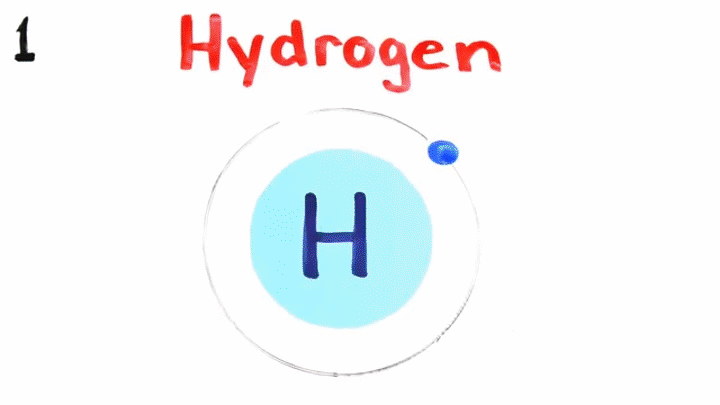
Wednesday: Filtration experiment /worksheet

Thursday/Friday: Heart- pre lab worksheet
Success Criteria: I can/have...
- Understand lab rules and warnings so they can conduct themselves in a safe manner
- Know the three states of matter- solids, liquids and gases, their particle arrangement linked to their properties.
- Link particle arrangement and particle motion to the physical properties of each state.
- Describes changes in states of matter. (in terms of evaporation, melting, condensation, freezing, sublimation, and reverse sublimation).
- Describe the three subatomic particles in an atom.
- Explain the differences between protons, neutrons, and electrons. Recap the characteristics of elements in the Periodic Table.
Activities:
- Element, mixtures and compounds experiment
- Atomic structure experiment and worksheet
- Filtration experiment
Homework:
EP on GoogleclassroomWeek 1-3 learning document on GC
-
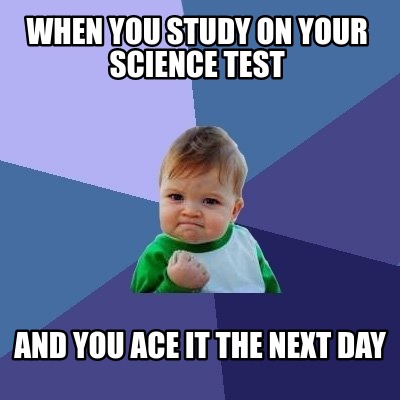
CAT's week this week. I will have CAT revision for you in the sessions that I see you :)
-
FOCUS / ARONGA learning intentions:
- We are FOCUSING on the content of chemistry, through the context of Halloween by identifying common household acids and bases
- We are FOCUSING on the content of chemistry, through the context of Halloween by developing a red cabbage indicator to compare the differences in colours of the acidic and basic solutions and explain why we see these colour changes.

Kia ora ākonga,
Over the next 2 weeks we will be looking at acids and bases. Given that the next 2 weeks are short weeks, we will mostly be in the explore stages.
Plan for the weeks are as follows:
Monday: 9M1( no lesson as we have champions assembly) , 9M2: Notes on acids and bases
Wednesday: Heart dissection
Thurs: Acids and bases scientific literacy
Friday: TOD
Week 7:
Monday: 9M1: Acids and bases notes , 9M2: Catch-up notes
Wednesday: Red cabbage indicator experiment
Thurs: Scientific literacy
Friday: TOD (9M1 do this under must do/can do)
Success Criteria: I can/have...
- Describe how the various acid and base theories have progressed through the centuries.
- Understand the pH scale.
- Differentiate between acids and bases.
- Identify properties of acids and bases.
- Identify household as acidic or basic based on their properties.
Activities:
- Heart dissection
- Scientific literacy reading
- EP
- Red cabbage indicator experiment
Homework:
Catch-up notes on google classroom

